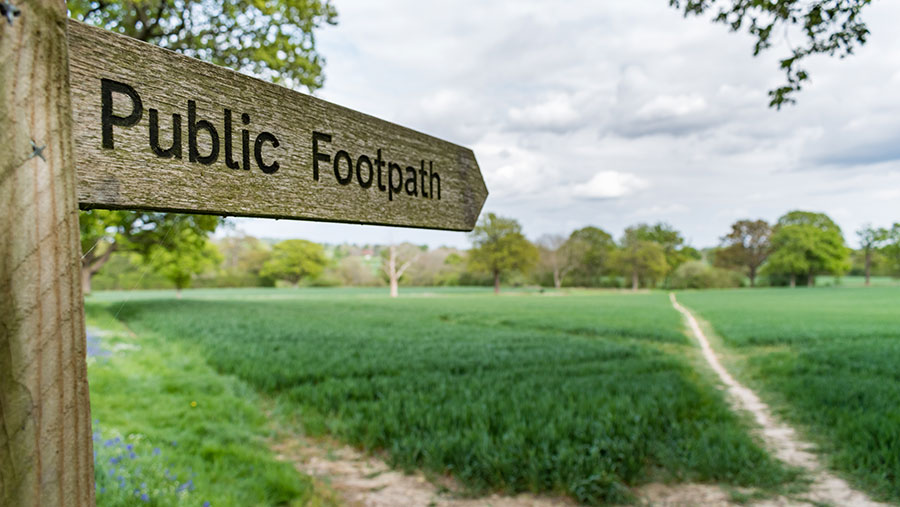Opinion: Footpath ‘horror stories’ simply stoke division
 © Rich Higgins/Adobe Stock
© Rich Higgins/Adobe Stock Horror stories about people being trampled by cows are not what you want to read just before a holiday which will almost certainly involve encounters with cattle.
Unfortunately, the press was recently full of just such alarming reports, prompted by the prosecution of a landowner, after cows which had already injured one group of walkers were put back in the same field and attacked another group.
See also: Opinion – farm support should help real people doing real jobs
In online comments, people added their own tales of being menaced or injured by “aggressive” bovines.
Some demanded that farmers be obliged to fence off rights of way, or be prohibited from keeping cattle in those fields altogether.
These comments showed little understanding of the practicalities of farming and a failure to appreciate that the countryside is a working environment.
At my partner’s farm in Cumbria, the calving fields are well away from public paths, as much to protect the stock from people and dogs as vice versa, but it’s not feasible to do more. A path runs through five fields, all needed as part of the grazing rotation.
Even if the farm could bear the cost of miles of double fencing this would mean fields sliced in half and cattle cut off from sources of water. And it would look terrible.
Happily, we had no difficulties with livestock during our holiday. A group of bullocks played Grandmother’s Footsteps with us for the length of their field but did not trouble us.
On a different footpath there was a moment of let’s call it “surprise” when one of the animals lolling under trees got to its feet and revealed itself to be a Limousin bull of impressive size, but having impressed us, he merely ambled off to find a better patch of shade.
Personally, I don’t expect a walk in the country to be a sanitised experience – I can cope with curious bullocks, ploughed fields and recalcitrant gates.
However, judging from media coverage, the original purpose of rights of way as routes for country-dwellers to get from A to B seems to have been forgotten and the public now expects paths to be a recreational facility which they and Fido are entitled to enjoy entirely free of risk or inconvenience, regardless of the fact that the paths cross someone else’s land and farmers need to farm.
I don’t think these expectations are reasonable, but neither is it reasonable for walkers who are trying to behave responsibly to encounter difficulties which landowners could ameliorate.
On our farmland walks during my recent holiday we were occasionally flummoxed by the absence of waymarking. We are competent map-readers, but even with the help of Ordnance Survey we were not always entirely confident we were where we should be.
Our concern was that we might accidentally end up somewhere potentially dangerous.
With more people heading into the countryside and many of them not having much idea how to behave when they are there, landowners need to give careful thought to mitigating risks.
Farmers probably think they have better things to do than save feckless townies from themselves, but they understand their own land and livestock and will know how best to keep people and hazards separate.
The alternative might be onerous obligations being imposed from above by legislators who wouldn’t know one end of a cow from the other.

